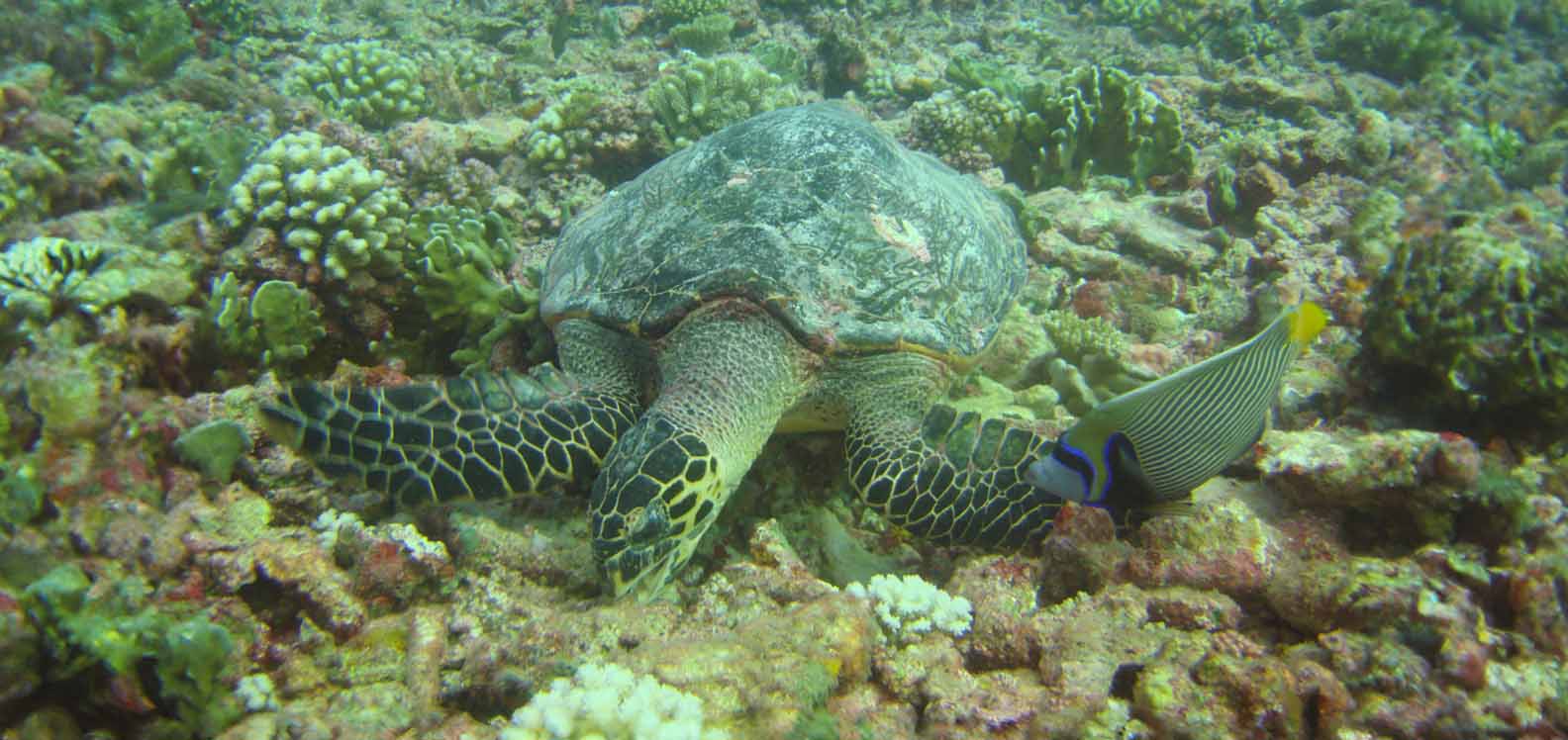
Hawksbills typically forage on coral reefs where their diet is predominantly sponges. Credit: Jeanne A Mortimer
Using tracking data, a new study has revealed for the first time that hawksbill turtles feed at reef sites much deeper than previously thought.
Critically endangered hawksbill turtles are found in every ocean and are the most tropical of sea turtles. Adult hawksbills have long been considered to have a close association with shallow (less than 15 metres depth) seas where coral reefs thrive.
Young hawksbills drift in currents during their open water phase of their development before they move to seabed habitats. Hawksbills are usually seen foraging in coral reefs where their diet is predominantly sponges.
To study their feeding habits in more detail, researchers at Swansea, Florida and Deakin universities used high-accuracy GPS satellite tags to track 22 adult female hawksbills from their nesting site on Diego Garcia in the Chagos archipelago in the Indian Ocean to their foraging grounds.
Dr Nicole Esteban, Associate Professor Marine Biology at Swansea University explained the findings from the tracking data: “We predicted that hawksbills tracked in our study would probably migrate to shallow coral reefs around the seven atolls of the Chagos archipelago. Many studies have shown the pristine nature of these reefs, and we have previously observed hawksbills frequently foraging in reef habitats there.
“But, surprisingly, all turtles migrated to deep, remote banks and submerged reefs in the archipelago, remaining at these deep sites for more than 6,000 combined days of tracking. By looking at nautical charts for the turtle locations, we could see that the foraging habitat was located at more than 30 metres depth.
“More than 183,000 depth measurements relayed from the tags on three turtles showed that average depths were between 35 and 40 metres. Most dives reached depths between 30 and 60 metres. That’s much deeper than we expected.”
The researchers believe that these mesophotic ecosystems may support a rich benthic biodiversity, including sponges. Fishing fleets in the Western Indian Ocean are known to target submerged banks, such as the Saya de Malha Bank, suggesting high abundance.
Dr Esteban added: “Our study findings highlight that submerged banks and mesophotic depths are important foraging grounds for critically endangered marine animals such as turtles and may support a rich array of marine life. While the mesophotic reefs used by foraging hawksbills in our study lie within one of the world’s largest marine protected areas, with protection from industrial fishing, we provide evidence to highlight importance of conservation planning for mesophotic ecosystems in the region.
These submerged banks in the Chagos archipelago, and probably others around the world, should be key areas for conservation focus. The resilience of marine ecosystems, and all that lives within them, may rely on the health of these deeper, uncharted habitats, especially in the face of climate change.”
